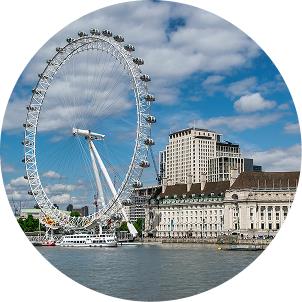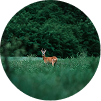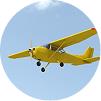Refine your search
Free Cancellation
Book your activity worry-free!
Price
Categories
Duration
Time
Select Your Experience












Zoo in Nepal

Private Day Trip to Central Zoo at Jawalakhel

Private Central Zoo Tour in Kathmandu
Explore More Things to Do in Various Destinations
Visit The Most Exciting Zoo Destinations
Discover Nepal Through Various Categories
Experience More Amazing Activities In Nepal
The Best Zoo in Nepal for A Peaceful Day with the Wild
When it comes to wildlife experiences in Nepal, choices are limited, but not lacking in charm. While the country is home to several wildlife research centres, animal rescue shelters, and small-scale enclosures, Central Zoo in Jawalakhel remains the only official, full-scale zoo in Nepal that’s open to the public. Operated by the National Trust for Nature Conservation, this historic zoo offers travellers, families, and students an opportunity to connect with rare Himalayan species and exotic animals in a structured, thoughtfully maintained setting.
Whether you’re travelling with kids, taking a break from temple trails, or simply curious about Nepal’s conservation efforts, this is the one place where you can see tigers, rhinos, red pandas, and reptiles, all within the heart of Kathmandu Valley.
In this guide, we cover the best zoo in Nepal for visitors, including what to see, when to go, how much to pay, and why this unique city-centre sanctuary is worth your time.
Why Visit Zoos in Nepal
Up-close Animal Viewing
Unlike some traditional zoos, Nepal’s Central Zoo allows for close yet safe observation of wild animals. Visitors can view tigers resting in open enclosures, watch snow leopards navigate rocky landscapes, or marvel at rare species like red pandas and gharials. The layout ensures that animals have space to move while still being visible to guests.
Natural Design with Heritage Elements
Set within six hectares of green space, the zoo features not only wildlife exhibits but also historic elements such as a royal-era pond that now offers paddle boat rides. Shaded pathways, native plants, and traditional stonework make the zoo feel more like a garden retreat than a conventional animal park.
Family-friendly Experiences
Children can enjoy more than just animal exhibits. The zoo offers a kids’ fun park, play zones, boating experiences, and a mini aquarium. Educational signage, interactive exhibits, and a zoo library help young visitors learn about biodiversity in an engaging way.
Centrally Located within Kathmandu Valley
The zoo’s location in Jawalakhel, Lalitpur, makes it incredibly easy to access from most parts of the city. It’s a perfect addition to any Kathmandu Valley itinerary and can be combined with nearby attractions such as Patan Durbar Square, the National Botanical Garden, or handicraft markets.
Flexible Pricing with Local Discounts
The Nepal zoo ticket is affordable for both domestic and international travellers. Pricing is tiered by nationality, with significant discounts for Nepali citizens, students, and children. SAARC nationals also benefit from reduced rates, making it accessible to regional visitors.
Engaging Activities for All Age Groups
From boating and wildlife observation to picnicking and photography, visitors can do a lot here. Whether you’re travelling solo, as a couple, or with kids and seniors, the zoo provides a well-rounded mix of recreation and education.
Ideal Setting for Wildlife Photography
Wide walkways and unobstructed sightlines make it easy to photograph the animals without disturbing them. Capture the elegance of a snow leopard, the scale of a rhino, or the vibrant colours of tropical birds, all in natural light and well-maintained surroundings.
Top Zoos in Nepal
From Bengal tigers and red pandas to crocodiles and rare Himalayan species, Nepal’s one public zoo offers a surprisingly diverse and educational wildlife experience. While there’s just one official zoo open to visitors, it continues to attract families, students, and travellers alike with its mix of heritage, conservation, and close-up animal encounters.
Central Zoo
Location: Jawalakhel, Lalitpur (approximately 15–20 minutes from central Kathmandu)
Overview:
Central Zoo is Nepal’s oldest and only official zoo, first built in 1932 as a private menagerie and opened to the public in 1956. Today, it’s managed by the National Trust for Nature Conservation (NTNC) and home to more than 900 animals representing 100+ species. From endangered Himalayan wildlife to exotic reptiles and birds, the zoo offers an immersive introduction to Nepal’s biodiversity, with added features like a children’s park, boating pond, and educational exhibits.
Key Highlights:
- Paddle boat rides on the historic pond
- Animal enclosures with native and exotic species
- Dedicated reptile house and walk-through aviary
- Children’s fun park and shaded picnic areas
- Educational displays and zoo library
- Breeding and conservation programmes by NTNC
Featured Animals: Bengal tiger, red panda, snow leopard, one-horned rhinoceros, Himalayan black bear, leopard cat, rhesus macaque, gharial, Indian python, tortoise, hornbill, parakeet, ostrich, deer, wild buffalo
Opening Hours: Daily from 10:00 AM to 5:00 PM
Ticket Price: Nepal zoo ticket prices are categorised by nationality:
- Nepali citizens: INR 95 (Adults), INR 55 (Students), INR 30 (Children aged 4–12)
- SAARC nationals: INR 320 (Adults), INR 160 (Children)
- Foreign nationals: INR 480–640 (Adults), INR 240–320 (Children)
Additional charges may apply for paddle boating, fun park rides, and special exhibits. Group and school tour rates are also available.
Visitor Tips
- Visit early or after 3:00 PM to avoid the midday heat
- Weekdays are less crowded compared to weekends and public holidays
- Bring hats, water, and sunscreen, especially in warmer months
- Avoid flash photography and feeding the animals
- Combine your visit with nearby attractions like Patan Durbar Square or the Botanical Garden
Tips for Visiting Zoos in Nepal
Book Tickets in Advance
While ticket counters operate on-site, it’s smart to book your visit in advance through the official NTNC website or local travel platforms. This can help avoid long queues, especially during weekends, school trips, or holidays.
Dress for the Weather
Kathmandu’s climate can be unpredictable. Dress in light layers and carry rain protection if visiting in monsoon months. During the dry season, wear breathable clothes and use sunscreen to stay comfortable as you explore the open areas.
Follow Animal Safety Guidelines
Respect all posted signs and zoo regulations. Feeding, teasing, or tapping on enclosures is prohibited. The animals are housed in open-air habitats that prioritise their well-being, and guests are expected to help maintain a peaceful environment.
Choose Weekdays for a Quieter Visit
The zoo is a favourite among local families and school groups, especially on weekends and public holidays. For a quieter and more leisurely visit, plan your trip for a weekday morning or late afternoon.
Combine Parks with Other Day Trips
Its central location makes it easy to combine with other Kathmandu Valley attractions. Consider pairing your visit with a stroll through Patan Durbar Square, the Godavari Botanical Garden, or even a handicraft shopping stop in Jawalakhel.
Bring Snacks but Use Designated Areas
There are food stalls and small cafés inside the zoo grounds, but visitors can also bring their own snacks. Eating is only allowed in designated picnic spots, so avoid bringing food near the animal zones or aviaries.
Use Boating and Rest Zones
One of the most relaxing parts of your visit will be the paddle boat rides on the historic central pond. Don’t miss this peaceful experience, especially in the early afternoon. Benches and shaded rest areas are available throughout the zoo.
Look out for Educational Programmes
Keep an eye out for NTNC’s conservation initiatives, school outreach sessions, or themed exhibitions during special events. These programmes enhance the experience and provide valuable insights into Nepal’s conservation efforts.
Capture the Moments Respectfully
While photography is encouraged, always be mindful of your surroundings. Avoid loud noises, sudden movements, or camera flashes near animals, especially reptiles, birds, and big cats.